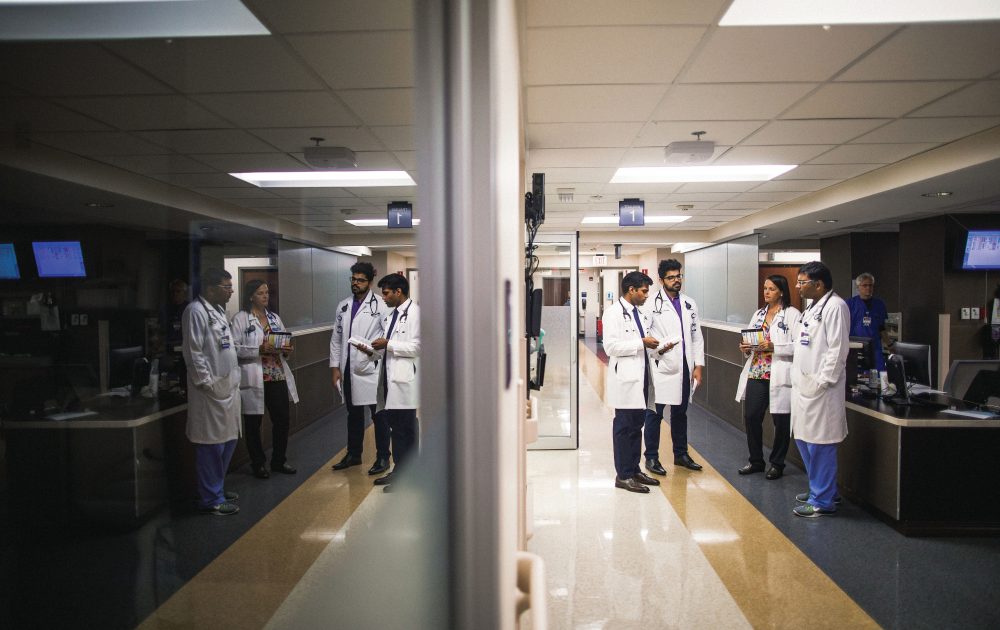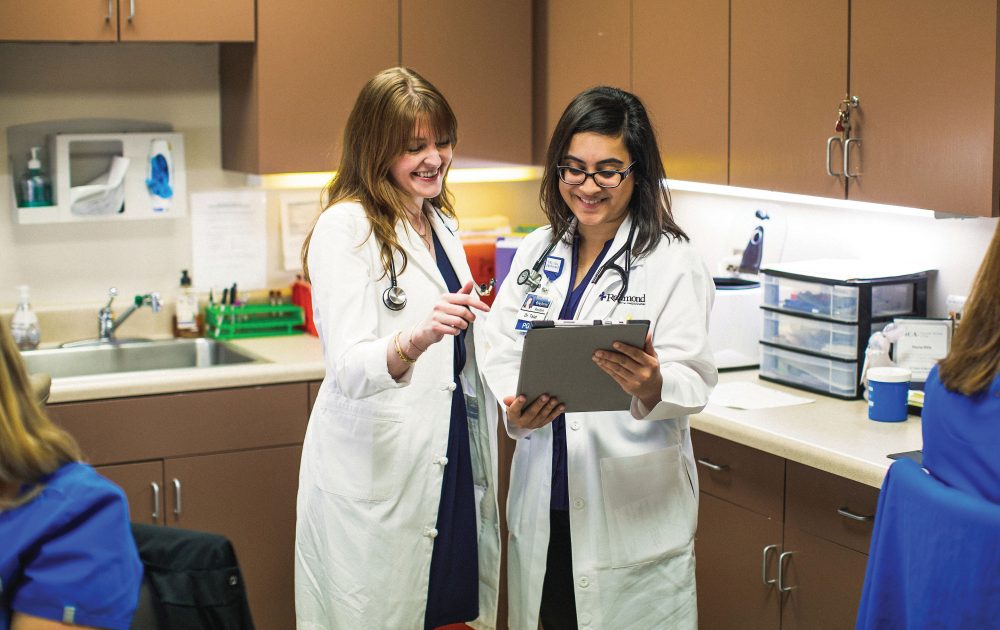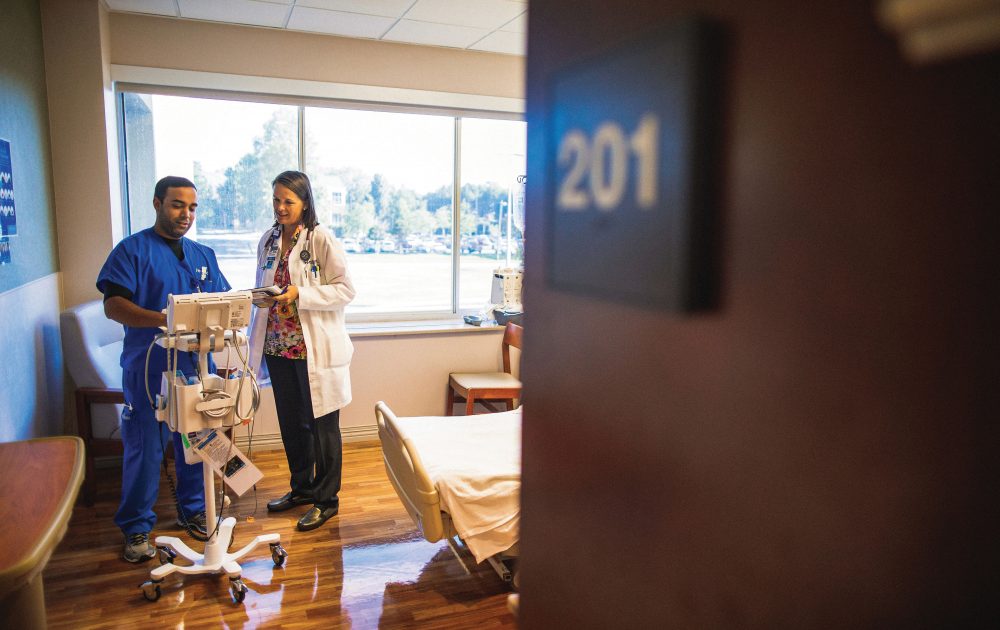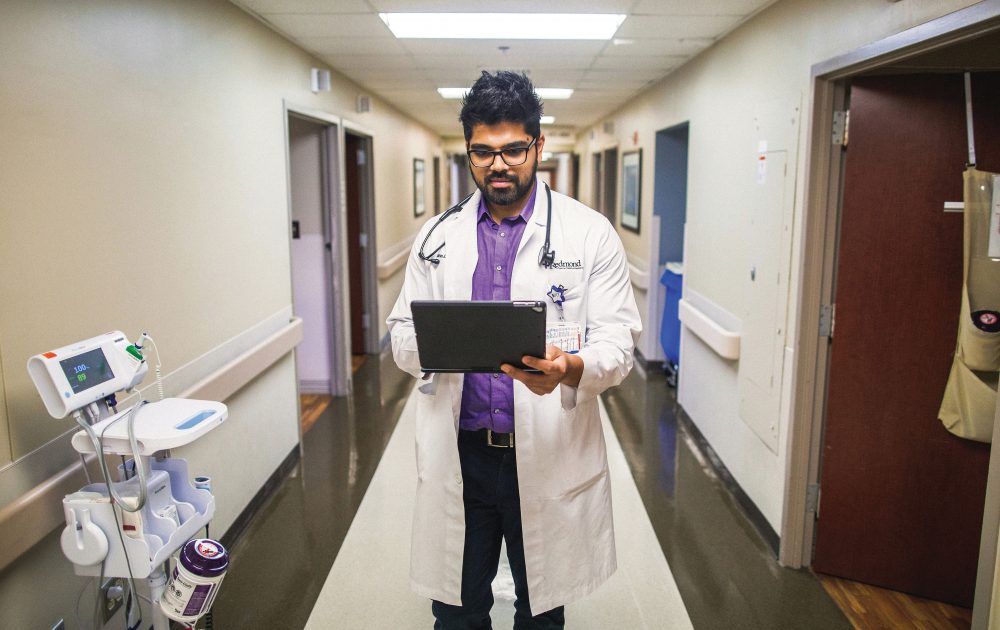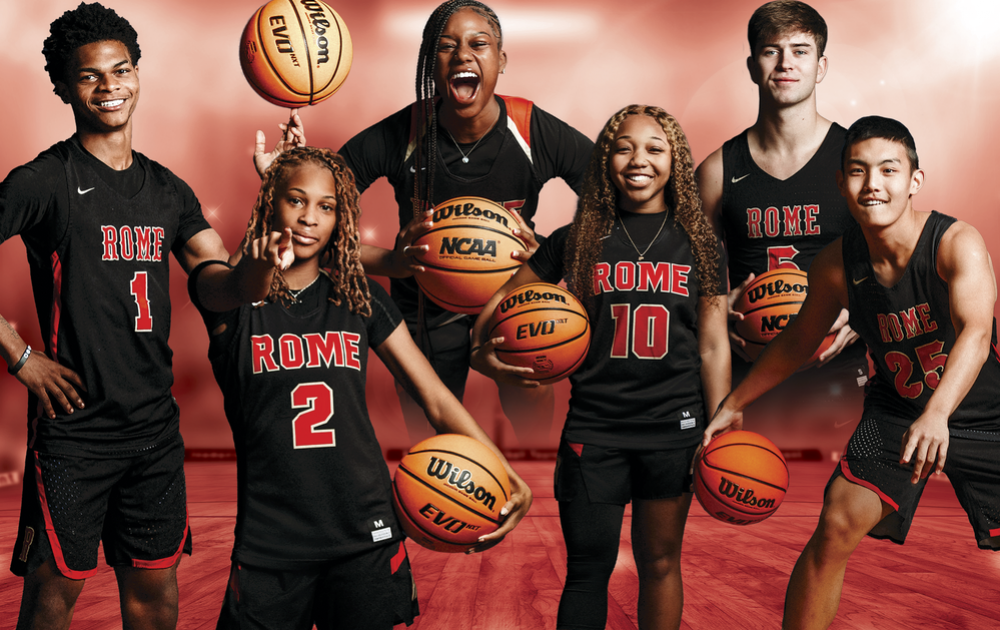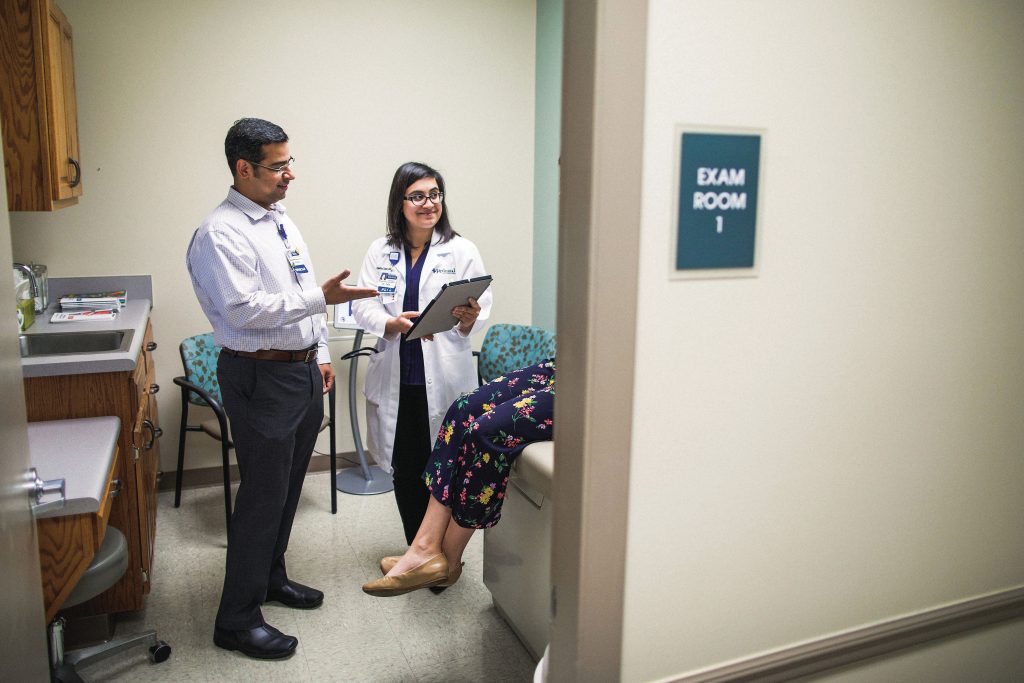
Photos Cameron Flaisch
WHEN YOU TURN on the TV or log into Netflix, the halls of hospitals are oftenpainted as dim, unfeeling places. The term “clinical” stems directly from the cold metal surfaces and fluorescent lights people often associate with hospitals. However, at Redmond Regional Medical Center, the halls are warm and inviting, even more so with the added bonus of the smiling faces of Redmond’s new Internal Medicine Residency Program members.
“A big part of [creating the residency program] was the shortage of primary care physicians, recognizing that as an area of need, and knowing what a great, unique community Rome is, too,” Redmond’s Director of Marketing and Public Relations Andrea Pitts says. “In bringing the internal medicine residency program, we’re meeting that need.”
Since its opening in 1972, Redmond has had a history of firsts, according to Pitts. This includes the first heart catheterization lab, the first open heart surgery and the first total joint surgery in northwest Georgia. Now that Redmond is officially a teaching hospital, it is at a prime position to attain more of these “firsts”, all in working with the local community, which was Dr. Dan Robitshek’s vision when developing the residency program.
“On our home page, you will notice three words that stand out,” Robitshek says on the Redmond Residency’s website. “Education, Innovation and Compassion. Those are not just taglines for marketing purposes. They are the concepts that our programs are built upon: educating our residents to become exceptional physicians by building a learning environment that utilizes the most successful and innovative teaching methods and by role modelingpatient-centered compassion to our diverse population.”
At its most basic level, a residency program is an in-hospital working and learning program where you practice medicine individually as well as in a group. This environment allows for members of the program to work with patients while honing their clinical skills.
“A Residency Program is the final phase of training for physicians who have graduated
from their medical degree programs. They are licensed physicians, mentored by attending physicians who provide training and guidance for their clinical development.”
“We’re responsible for patients directly, but we work as a team,” Dr. Kristal Cronin says. “As a first year, I’m called an intern.Second and third years are called residents
or senior residents, and we work with an attending physician who out of residency and well experienced. In a day, I work with a number of patients, around 5 to 8. I do all the data collection, learn all the things that go on
overnight and visit each of the patients on my own. Then, I present a plan of action for these patients to my senior resident and then we go around and do the same thing again with the attending physician. It’s kind of a three-layered care system for the patients.”
This type of system is fairly common in residency programs, but in a smaller, specialized hospital like Redmond, the physicians and staff members have more opportunities to get to know their patients. In the afternoons, residents have conferences with attending physicians, also referred to as “attendings” to discuss different issues and topics relevant to their current cases. This also allows residents and attendings more time to grow closer as a staff.
“In medical school, I went to hospitals in New York, California, some in Florida and Atlanta actually too, but I liked the people at
Redmond the best,” second-year resident Dr. Jaten Patel said. “The nurses, staff, physicians, they are all very helpful. You get to know all the staff and your patients very well and you don’t feel lost in a big program. It was also a new program so that we had a lot of time with and got to learn directly from the attending. We kind of got to shape the program how we wanted to; The education is very open to our concerns and they can address them appropriately.”
“I actually did an observership here for a month with Dr. Robitshek and really just loved the hospital,” first-year resident Dr. George Abraham says. “The people here are great, it’s like a family environment. Everybody’s really friendly and the attendings go out of their way to really teach you. It’s a special, one-of-a-kind place.”
When they’re not on the hospital floors, in their daily conferences or seeing patients in the Redmond Medical Group clinics, residents are often volunteering with one of Redmond’s many community partners.
“We have a clinic week and, for a day out of the week, we go to the free clinic across the street called Faith and Deeds” Abraham says. “We do a lot of work with those patients, helping those who can’t afford medical care.”
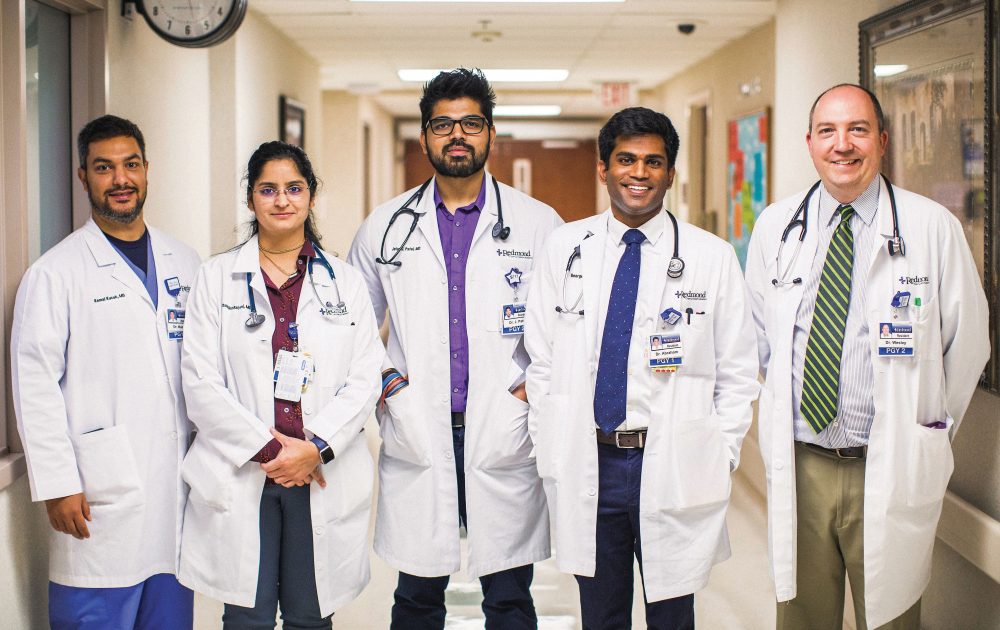
“What was really meaningful to me personally was the Special Olympics,” Dr. ZubdaTalat says. “Last year, unfortunately Special Olympics, who previously had other sources to get medical clearance for their athletes, didn’t have any that year, so they reached out to us. Our coordinator, Barbara Naymick, who just has the biggest heart and the warmest spirit said ‘Absolutely!’. I was one of the interns that went into that and, to be a part of that and to contribute in our way to help engage with the students pursuing this was really meaningful.”
Talat is a second-year resident at Redmond and, after working at Redmond for a year and
a half, her position there has reaffirmed her decision to pursue medicine tenfold.
“The bond that you make with these patients, the help that you can provide for them, that is your fuel and your motivation for doing this. With the long hours and the fatigue that’s inevitable when it comes to residency, no matter where you go, those are the things that keep you going. One of my interns had a patient who was so happy with the kind of care that he got at Redmond, she gave him a tomato from her garden. I told him that this is just the beginning. It’s these tomato moments that you do what you do.”
While residents have three years of “tomato moments” to look forward to, Redmond is looking forward to the many years ahead
of bringing in the best people to Rome. No matter their backgrounds, Redmond residents are creating a better hospital for the staff and patients.
“Like so many things at Redmond, it’s about the people. Dr. Cronin set aside her dream of medical school to be a wife and mother.
After her family moved to Sewanee, she finally pursued her dream by attending Georgia PCOM. Dr. Patel is from Rome, graduating from Rome High School and UGA. After medical school,
he came back here – back home. Dr. Abraham first visited Redmond during a clinical rotation with Dr. Robitshek. He loved his experience at Redmond so much that he decided he wanted to come back here to do his residency training – and found a home in Rome.”
As Redmond’s internal medicine residency program grows, those who work there not only nurture strong skills in their fields, but valuable connections as well. In a close-knit community like Rome, this could only mean good things ahead for Redmond and those who call on their expertise when they’re in need.

